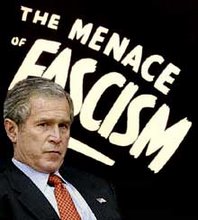BAGHDAD, Iraq - Army 1st Lt. Antonio Hardy took a slow look around the east Baghdad neighborhood that he and his men were patrolling. He grimaced at the sound of gunshots in the distance. A machine gunner on top of a Humvee scanned the rooftops for snipers. Some of Hardy's men wondered aloud if they'd get hit by a roadside bomb on the way back to their base.
"To be honest, it's going to be like this for a long time to come, no matter what we do," said Hardy, 25, of Atlanta. "I think some people in America don't want to know about all this violence, about all the killings. The people back home are shielded from it; they get it sugar-coated."
While senior military officials and the Bush administration say the president's decision to send more American troops to pacify Baghdad will succeed, many of the soldiers who're already there say it's a lost cause.
"What is victory supposed to look like? Every time we turn around and go in a new area there's somebody new waiting to kill us," said Sgt. 1st Class Herbert Gill, 29, of Pulaski, Tenn., as his Humvee rumbled down a dark Baghdad highway one evening last week. "Sunnis and Shiites have been fighting for thousands of years, and we're not going to change that overnight."
"Once more raids start happening, they'll (insurgents) melt away," said Gill, who serves with the 1st Infantry Division in east Baghdad. "And then two or three months later, when we leave and say it was a success, they'll come back."
Soldiers interviewed across east Baghdad, home to more than half the city's 8 million people, said the violence is so out of control that while a surge of 21,500 more American troops may momentarily suppress it, the notion that U.S. forces can bring lasting security to Iraq is misguided.
Lt. Hardy and his men of the 2nd Brigade of the Army's 2nd Infantry Division, from Fort Carson, Colo., patrol an area southeast of Sadr City, the stronghold of radical Shiite cleric Muqtada al-Sadr.
A map in Hardy's company headquarters charts at least 50 roadside bombs since late October, and the lieutenant recently watched in horror as the blast from one killed his Humvee's driver and wounded two other soldiers in a spray of blood and shrapnel.
Soldiers such as Hardy must contend not only with an escalating civil war between Iraq's Sunni and Shiite Muslims, but also with insurgents on both sides who target U.S. forces.
"We can go get into a firefight and empty out ammo, but it doesn't accomplish much," said Pvt. 1st Class Zach Clouser, 19, of York, Pa. "This isn't our war - we're just in the middle."
Almost every foot soldier interviewed during a week of patrols on the streets and alleys of east Baghdad said that Bush's plan would halt the bloodshed only temporarily. The soldiers cited a variety of reasons, including incompetence or corruption among Iraqi troops, the complexities of Iraq's sectarian violence and the lack of Iraqi public support, a cornerstone of counterinsurgency warfare.
"They can keep sending more and more troops over here, but until the people here start working with us, it's not going to change," said Sgt. Chance Oswalt, 22, of Tulsa, Okla.
Bush's initiative calls for American soldiers in Baghdad to take positions in outposts throughout the capital, paired up with Iraqi police and soldiers. Few of the U.S. soldiers interviewed, however, said they think Iraqi forces can operate effectively without American help.
Their officers were more optimistic.
If there's enough progress during the next four to six months, "we can look at doing provincial Iraqi control, and we can move U.S. forces to the edge of the city," said Lt. Col. Dean Dunham, the deputy commander of the 2nd Infantry Division's 2nd Brigade, which oversees most of east Baghdad.
Maj. Christopher Wendland, a senior staff officer for Dunham's brigade, said he thinks there's a good chance that by late 2007 American troops will have handed over most of Baghdad to Iraqi troops.
"I'm actually really positive," said Wendland, 35, of Chicago. "We have an Iraqi army that's actually capable of maintaining once we leave."
If the Iraqi army can control the violence, his thinking goes, economic and political progress will follow in the safest areas, accompanied by infrastructure improvement, then spread outward.
In counterinsurgency circles, that notion is commonly called the "inkblot" approach. It's been relatively successful in some isolated parts of Iraq, such as Tal Afar on the Syrian border, but in most areas it's failed to halt the bloodshed for any length of time.
Wendland and Dunham said, however, that if the Iraqi forces in Baghdad falter, much of the city could fall to Sunni and Shiite insurgents.
"We have to have momentum . . . or else it could all fall like a house of cards," Wendland said.
Leaning against a pile of sandbags last week, 1st Lt. Tim Evers took a drag from his Marlboro cigarette. He said that while sending more troops sounded good, Sunni and Shiite fighters would only move out of Baghdad, fight elsewhere and wait until they can re-enter the capital.
Evers' men were part of the last U.S. effort to subdue Baghdad, Operation Forward Together, which included Iraqi and American soldiers. It lasted most of last summer and ended in failure.
"When we first got here it was, `Let's put up schools, let's work on a power plant' - but you can't do that without security, and security here is crap," said Evers, 26, of Stockton, Calif. "They keep trying different crap and it doesn't work. . . . They're talking about the inkblot method, and doing that you secure a small area, but the rest is still bad."
America's three-and-a-half-year effort to quell Iraqi unrest has been largely unsuccessful, according to statistics compiled by The Brookings Institution, which gets most of its data from the U.S. government.
In June 2003, a month after Bush declared the end of major combat operations in Iraq, 18 U.S. troops were killed by hostile fire. Last month, hostile fire killed at least 80 American troops, according to Iraq Coalition Casualty Count, a Web site that tracks U.S. casualty numbers from military releases. On Jan. 20 alone, 25 U.S. soldiers were killed, almost one-third more than died in all of June 2003.
There are troubling indications in the Brookings statistics that adding more troops only to draw down later to lower levels - as is the current plan - may not bring peace.
The coming increase will bring the number of American soldiers and Marines in Iraq to some 153,000. During the country's national elections in December 2005, there were 160,000 U.S. troops in Iraq. Fifty-seven of them were killed by hostile fire, and there were on average 90 daily insurgent and militia attacks. In December 2006, when the number of U.S. soldiers and Marines in Iraq dropped to about 140,000, 95 Americans were killed and there were on average 185 attacks a day.
The problem, many soldiers say, is that as long as the majority of Iraqis oppose the presence of American troops, a trend that's only accelerated since the 2003 invasion, no amount of bullets or bodies will solve the problem.
That's a bitter truth for Sgt. Chance Oswalt and many others on the streets of Baghdad.
Oswalt somberly named two men in his company who fought in Fallujah in November 2004, in the most intense urban combat since Vietnam, only to be killed in Baghdad late last year. One bled to death after he was shot by a sniper; the other was killed by a roadside bomb.
"All of our friends who have been killed by (roadside bombs) and snipers, it's like there's no justice for it - it's just another body bag filled," he said. "The guys who died just trying to stay alive and get home, they'll be forgotten. No one will remember their stories."
Riding on a patrol last week, Spc. Elmer Beere looked out of his Humvee window for any hint of wires leading to a roadside bomb.
"It's kind of relentless and pointless," said Beere, 22, of State College, Pa. "It'll be the same thing going on here, no matter what we do."
The Nazis, Fascists and Communists were political parties before they became enemies of liberty and mass murderers.
Monday, February 5, 2007
Subscribe to:
Post Comments (Atom)




No comments:
Post a Comment